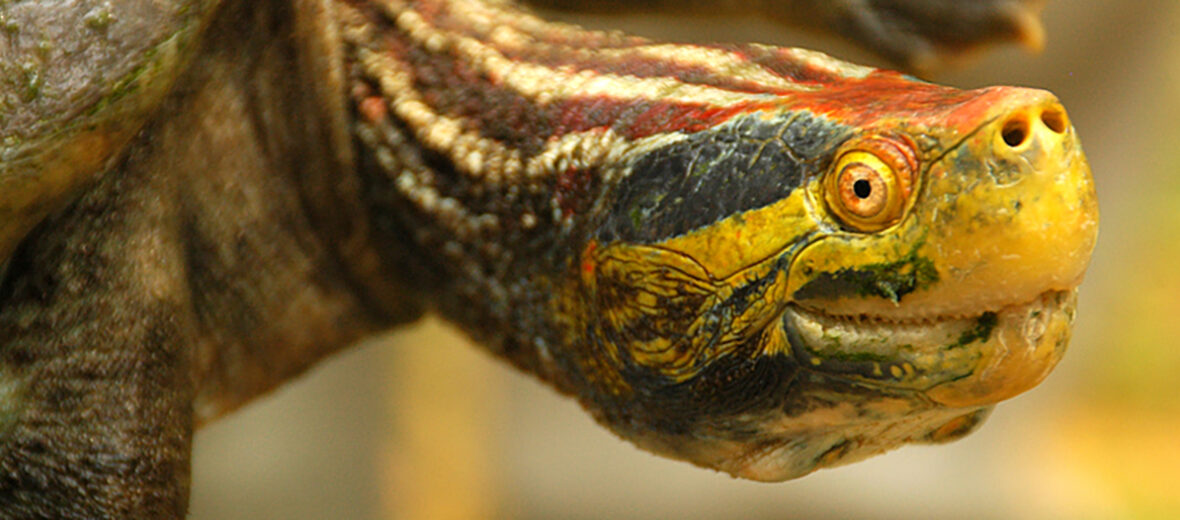
The red-crowned roofed turtle, aka Bengal roof turtle, hails from northeast India and Nepal. They prefer deeper flowing freshwater river habitats. Due to habitat segregation at the hands of dam constructions; harvesting aquatic resources; recreational activities by humans; pollution; and poaching for their meat and shells, these turtles are listed as Critically Endangered by the IUCN. There are only an estimated 500- wild individuals remaining, as of 2018. Those numbers are also decreasing.
First the Stats…
Scientific name: Batagur kachuga
Weight: Up to 55 lbs.
Length: Up to 22 inches
Lifespan: Up to 50 years
Now on to the Facts!
1.) These turtles are sexually dimorphic in that males are only roughly half the size of females.
2.) Thermoregulation is acquired by basking on logs, rocks, and the riverbanks.
3.) Their diet consists of nothing but aquatic plants.
4.) Jackals and birds of prey feast on their eggs.
5.) Their shells are strongly keeled and look like a roof. Hence their name.
But wait, there’s more on the red-crowned roofed turtle!
6.) These turtles have remained largely unchanged for approximately 110 million years.
7.) Females lay their eggs between March and April.
Did you know…?
During courtship the males transform their normal dull colors with brilliant red, white, yellow, and blue hues, that feature 6 distinct red stripes topping their heads.
8.) Up to 30, 3 inch long eggs are laid.
9.) Eggs hatch in up to 65 days.
10.) In some cultures, the red-crowned roofed turtle is revered for their symbolism of wisdom and longevity.
Be sure to share & comment below! Also, check out the Critter Science YouTube channel. Videos added regularly!
Want to suggest a critter for me to write about? Let me know here.
Some source material acquired from: Wikipedia & IUCN
Photo credit: IUCN SOS



